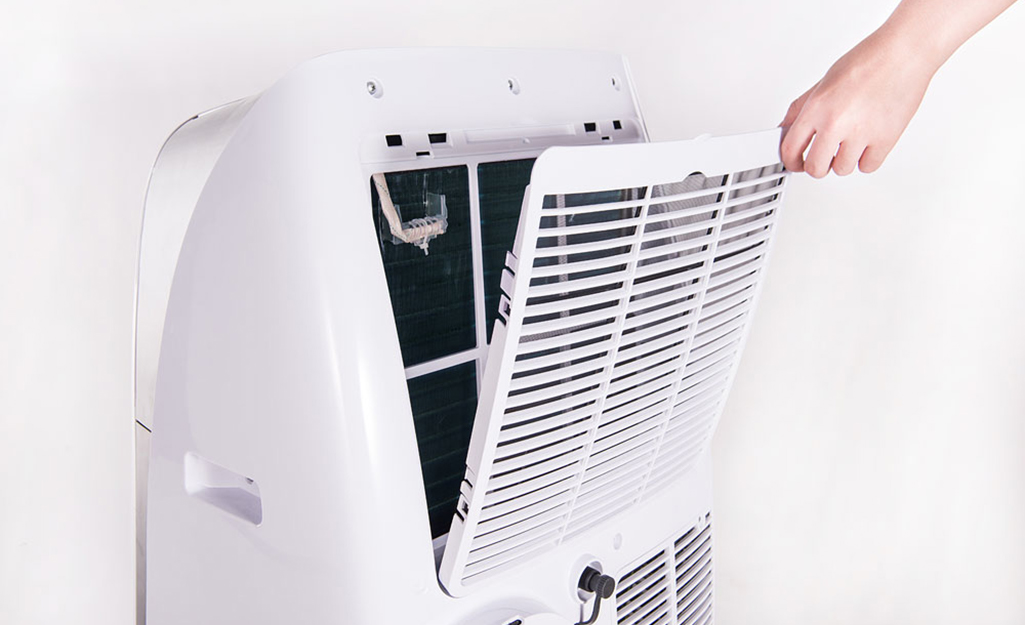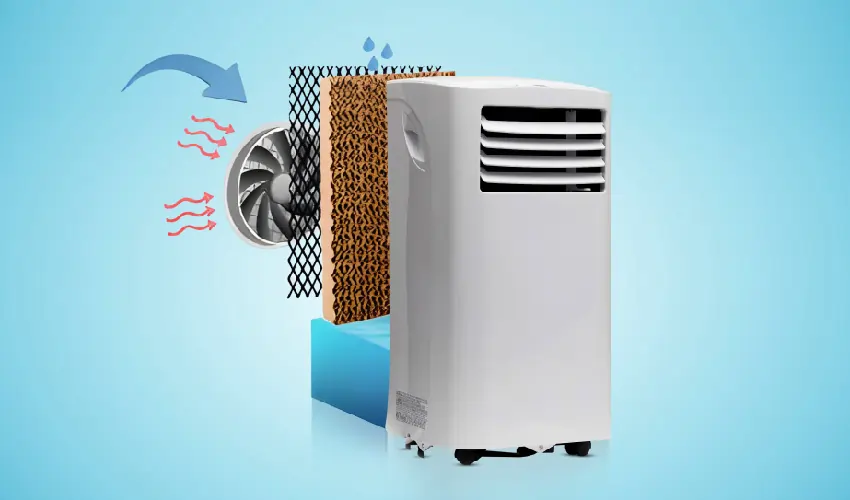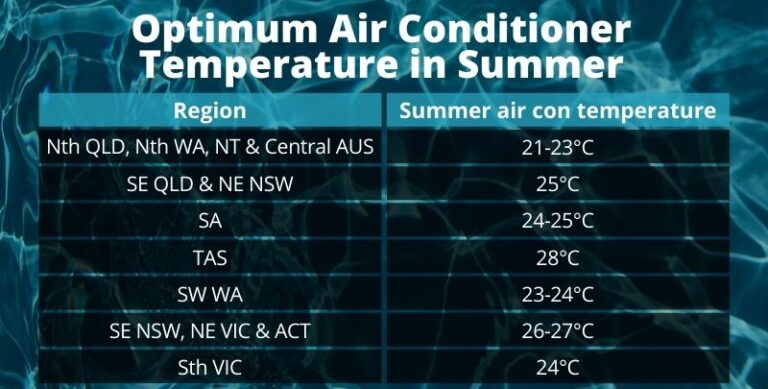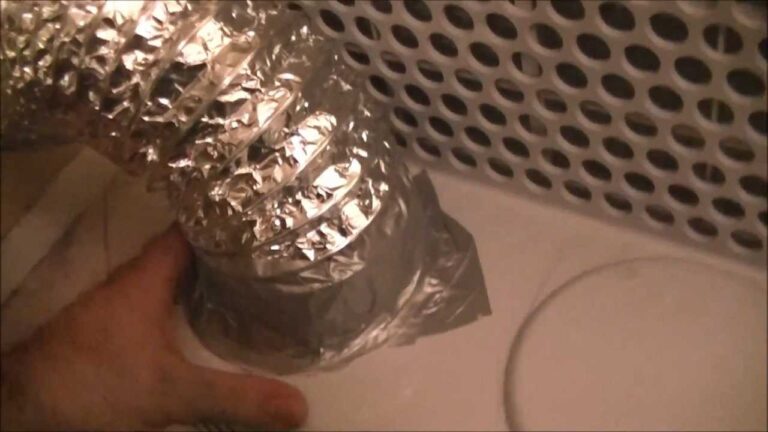Where Does The Moisture Go In A Portable Air Conditioner? Discover Now
In a portable air conditioner, moisture is collected and either evaporated or stored in a tank for manual draining. Some models also use a continuous drain option.
Portable air conditioners are popular for their convenience and efficiency. They cool small spaces without the need for permanent installation. These units work by drawing in warm air, cooling it, and expelling the cool air back into the room. During this process, they also remove moisture from the air.
The collected moisture is either evaporated and expelled through the exhaust hose or stored in an internal tank. Users may need to empty this tank periodically, or they can use a continuous drain option for hassle-free operation. Understanding how these units handle moisture helps in maintaining their efficiency.

Credit: www.homedepot.com
Introduction To Portable Air Conditioners
Portable air conditioners are a great way to stay cool. They are easy to move and simple to use. These units are perfect for small spaces and temporary cooling needs. They are also cost-effective and energy-efficient. Let’s dive into how these devices work and their key components.
How They Work
Portable air conditioners pull in warm air from the room. The air passes over a cold coil inside the unit. This process cools the air and removes moisture. The cool, dry air then returns to the room. The warm air and moisture are vented out through a hose.
Key Components
Portable air conditioners have several key parts:
- Compressor: Compresses the refrigerant to cool the air.
- Evaporator Coil: Absorbs heat from the air.
- Condenser Coil: Releases the heat outside.
- Exhaust Hose: Vents warm air and moisture outside.
- Water Tank or Drainage System: Collects or removes the moisture.
These components work together to cool your space effectively.
| Component | Function |
|---|---|
| Compressor | Compresses the refrigerant |
| Evaporator Coil | Absorbs heat |
| Condenser Coil | Releases heat |
| Exhaust Hose | Vents warm air and moisture |
| Water Tank or Drainage System | Collects or removes moisture |
Understanding these parts helps in maintaining your portable air conditioner.
Credit: www.quora.com
Moisture In Air Conditioning
Portable air conditioners are great for cooling small spaces. But many wonder about the moisture they produce. Understanding the moisture in air conditioning is key to using these devices efficiently.
Understanding Humidity
Humidity is the amount of water vapor in the air. High humidity makes the air feel warmer and more uncomfortable. Portable air conditioners help reduce humidity by cooling the air.
They pull in warm air from the room. As the air cools, moisture condenses and is removed from the air.
Role Of Moisture
Moisture in the air impacts how we feel. Too much moisture can lead to mold and musty smells. Portable air conditioners remove moisture to keep the air dry and comfortable.
Here’s how they manage moisture:
- Condensation: The unit cools the air, causing moisture to condense.
- Collection: The condensed water is collected in a tank or drained away.
- Evaporation: Some units use the heat from the compressor to evaporate the water.
These steps ensure your room stays cool and dry.
Moisture Collection Methods
Portable air conditioners not only cool the air but also remove moisture. Understanding the moisture collection methods is key to efficient usage. Below, we explore the different methods these units use to manage moisture.
Internal Tanks
Many portable air conditioners come with an internal tank. This tank collects the moisture removed from the air. Users need to empty this tank periodically. It’s a simple method, but it requires regular attention.
| Pros | Cons |
|---|---|
| No extra setup needed. | Requires regular emptying. |
| Easy to monitor water levels. | Can overflow if neglected. |
Continuous Drainage
An alternative method is continuous drainage. This involves attaching a hose to the unit. The hose directs the moisture to a drain or outside. This method is more convenient for long-term use.
- No need to empty tanks.
- Consistent moisture removal.
- Requires a nearby drain or window.
Both methods offer unique benefits. Choose the one that best fits your needs.
Evaporation Process
Portable air conditioners cool your room by removing moisture from the air. This moisture must go somewhere, right? The evaporation process handles this. It converts the water into vapor, releasing it outside.
Self-evaporation Systems
Some modern portable air conditioners have self-evaporation systems. These systems use the heat generated by the unit to evaporate the collected moisture. The process is automatic and reduces the need for manual drainage.
Here’s a quick look at how self-evaporation systems work:
| Step | Description |
|---|---|
| 1 | Moisture collected from air |
| 2 | Heat from unit warms the water |
| 3 | Water turns into vapor |
| 4 | Vapor released outside |
Efficiency Factors
Several factors affect the efficiency of the evaporation process. The ambient temperature and humidity levels play a big role. Higher temperatures make the evaporation process more efficient.
Here are some key factors that influence efficiency:
- Ambient Temperature: Higher temperatures speed up evaporation.
- Humidity Levels: Low humidity improves the process.
- Unit Maintenance: Regular cleaning keeps the system efficient.
- Unit Size: Larger units handle more moisture.
Understanding these factors can help you get the most out of your portable air conditioner. Regular maintenance and the right settings make a big difference.
Manual Drainage Techniques
Portable air conditioners are great for cooling small spaces. But, they produce moisture that needs to be drained. Understanding manual drainage techniques is crucial. This ensures your unit works efficiently.
Using Drain Hoses
Many portable air conditioners come with drain hoses. These hoses help channel water outside. Attach the hose to the drain port. Place the other end outside a window or into a drain. This method allows continuous drainage. Ensure the hose is not kinked or blocked. This ensures smooth water flow.
Emptying Water Tanks
Some units have built-in water tanks. These tanks collect moisture. Check the tank regularly. When it’s full, the unit may stop working. To empty the tank, remove it from the unit. Pour the water into a sink or drain. Ensure you replace the tank securely. This prevents leaks and keeps your unit running smoothly.
| Manual Drainage Techniques | Benefits |
|---|---|
| Using Drain Hoses | Continuous drainage, no need to check frequently |
| Emptying Water Tanks | Easy to monitor, no extra setup required |
Both drain hoses and water tanks have their benefits. Choose the method that suits your needs. This ensures your portable air conditioner stays efficient and effective.
Impact On Performance
Understanding where the moisture goes in a portable air conditioner is essential. Moisture management directly affects the unit’s performance. Let’s dive into its impact on cooling efficiency and energy consumption.
Cooling Efficiency
Portable air conditioners extract moisture from the air. This moisture either evaporates or is collected in a tank. When moisture is removed effectively, the cooling efficiency improves. The unit can cool your space more quickly and maintain a comfortable temperature.
If the moisture isn’t managed well, it hampers the unit’s efficiency. A full tank or blocked drainage system can cause the unit to work harder. This reduces its ability to cool effectively.
Energy Consumption
Energy consumption is also impacted by moisture management. A portable air conditioner with a full tank uses more energy. The unit struggles to perform optimally, leading to higher energy use.
Efficient moisture removal means the unit uses less power. This leads to cost savings on your energy bill. A well-maintained unit operates more efficiently, using energy wisely.
| Factors | Impact on Performance |
|---|---|
| Effective Moisture Removal | Higher Cooling Efficiency, Lower Energy Consumption |
| Full Tank/Blocked Drainage | Lower Cooling Efficiency, Higher Energy Consumption |
Maintenance Tips
Keeping your portable air conditioner in top shape ensures its efficiency. Regular maintenance prevents issues and prolongs its life. Below, we share essential maintenance tips. Follow these to keep your unit running smoothly.
Regular Cleaning
Regular cleaning is crucial for your portable air conditioner. Clean the air filters every two weeks. Dirty filters block airflow and reduce efficiency. Remove the filter and rinse it with warm water. Let it dry completely before reinstalling.
Check the condenser coils monthly. Dust and debris can accumulate on the coils. Use a soft brush or cloth to clean them. Avoid using harsh chemicals that could damage the unit.
Preventing Mold
Mold can grow in the moisture collected by the air conditioner. This can lead to health problems and bad odors. To prevent mold, empty the water tank regularly. If your unit has a continuous drain option, use it.
Keep the room where the air conditioner operates dry. Use a dehumidifier if necessary. Clean the inside of the unit with a mixture of water and vinegar. This kills mold spores and prevents growth.
Here is a simple table for quick reference:
| Maintenance Task | Frequency | Method |
|---|---|---|
| Clean Air Filters | Every 2 Weeks | Rinse with Warm Water |
| Check Condenser Coils | Monthly | Brush or Cloth |
| Empty Water Tank | As Needed | Manual or Continuous Drain |
| Clean Inside Unit | Monthly | Water and Vinegar Mix |
By following these maintenance tips, your portable air conditioner will stay in excellent condition. Ensure you perform these tasks regularly for the best results.
Troubleshooting Moisture Issues
Portable air conditioners are great for cooling rooms. But they can sometimes have moisture issues. This section will help you troubleshoot and resolve these problems.
Common Problems
Portable air conditioners can face several common moisture problems. Here are a few:
- Water Leaks: Water may leak from the unit.
- High Humidity: The air feels sticky or wet.
- Clogged Drainage: The drainage system gets blocked.
Solutions
For each problem, there are simple solutions you can try.
| Problem | Solution |
|---|---|
| Water Leaks | Check the water tank. Empty it if full. |
| High Humidity | Ensure the room is sealed. Close windows and doors. |
| Clogged Drainage | Clean the drainage hose. Remove any blockages. |
Follow these steps to keep your portable air conditioner running smoothly:
- Empty the water tank regularly.
- Check and clean the drainage system.
- Keep the room sealed.
- Inspect the unit for leaks.

Credit: famcocorp.ae
Frequently Asked Questions
Where Does The Water Go With A Portable Air Conditioner?
The water from a portable air conditioner typically evaporates or collects in a built-in drainage tank. Some models allow continuous drainage via a hose.
Where Does Condensation Go In A Portable Air Conditioner?
Condensation in a portable air conditioner typically collects in an internal reservoir. Some models use a hose to drain it outside.
Does Portable Ac Put Moisture In The Air?
No, a portable AC does not add moisture to the air. It actually removes humidity, making the air drier.
Conclusion
Understanding where the moisture goes in a portable air conditioner can enhance its efficiency. Proper maintenance helps in preventing mold and mildew. Regularly check and empty the water collection tray. Keep the unit clean for optimal performance. Remember, a well-maintained air conditioner provides a comfortable and healthy indoor environment.






